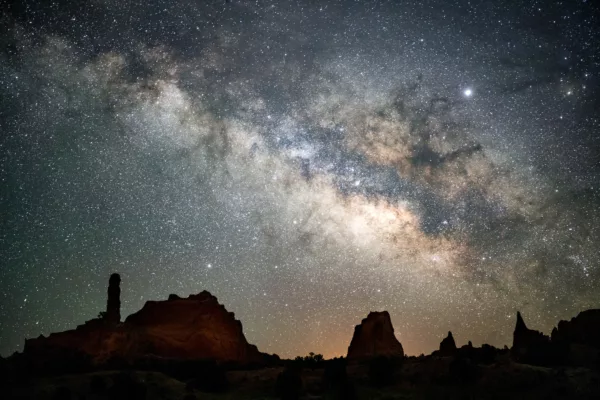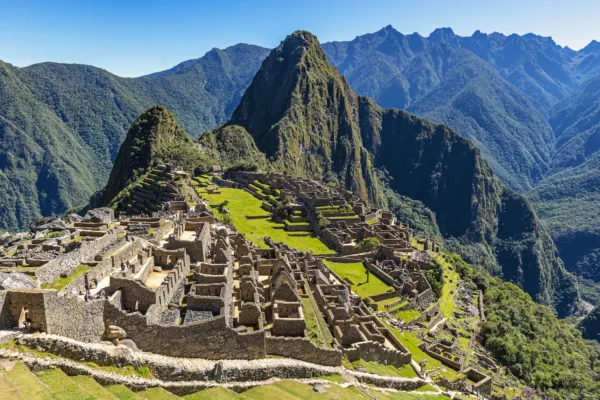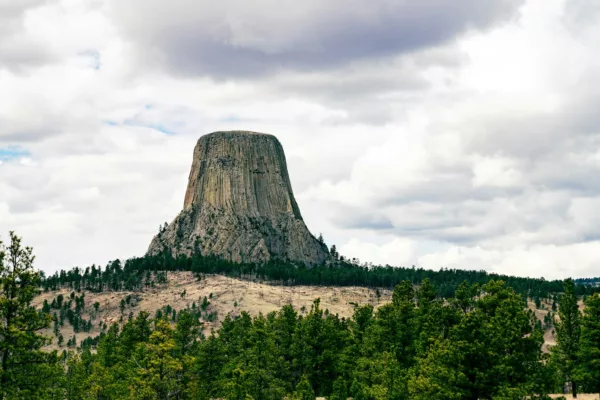To Geo-Tag, or Not Geo-Tag: What Impact Does Social Media Have On Earth’s Hidden Gems?

Social media is a blessing and a curse. It has opened our world up to people, places and concepts that we never knew existed and likely wouldn’t have found otherwise. On the flip side, it dictates much more of our lives than what is perhaps healthy and can create a toxic environment that can cause damage to the health of ourselves and our planet.
When it comes to travel and adventure, the benefits of social media have been immense. Our feeds are filled with dreamy landscapes, fascinating scenes and hidden gems that go straight onto our bucket list and, if we’re lucky and determined enough, we might be able to experience them for ourselves. One day these places may even make an appearance on our own Instagram feeds, inspiring others to get out and experience these natural wonders for themselves. Getting outside, seeing the world, exposing ourselves to new cultures, landscapes and experiences has immense benefits and is one of the most rewarding aspects of life—but overtourism persistently plagues the world’s most pristine natural places, and social media isn’t helping.
 Kellie Paxian
Kellie Paxian
Social media users, many of them with mass followings, are visiting places and sharing content, leading to mass influxes of visitors going to these once-unknown gems. Some often trample on the environment and disturb the peace and quiet that belongs to the communities who call these destinations home, which leads to a degradation of the sites. Ultimately, this deprives both locals and future visitors of the opportunity to experience them as they might like.
Right in our Canadian backyard, Parks Canada has recently instated a ban of private vehicles at the beloved and picturesque Moraine Lake due to overcrowding of the parking lot. Visitors are now required to take a shuttle, bus or third-party transit provider to visit the lake, causing a fair amount of backlash from those who will miss the ease of visiting on their own. Could social media be to blame?
 Kellie Paxian
Kellie Paxian
On one hand, Moraine is so beautiful—how could photographers and social media lovers be expected not to share?! On the other, these crowds of overtourism are not only spamming our social media feeds, they are also disturbing the serenity and access of the lake itself. New restrictions like this may invite exciting opportunities to start looking elsewhere, perhaps trekking farther, exploring deeper, discovering new pockets of local gems that we didn’t even know existed yet.
When it comes to sharing our world’s treasures online, what is the right thing to do? Share them for the world to see, or keep them as our precious secrets?
As a content creator and world traveller myself, here’s what I think.
Research and Respect
 Edith Cavel
Edith Cavel
Before visiting a destination, take the time to understand its environmental and cultural sensitivities. Learn about the local customs, traditions and regulations and consider the potential consequences of geotagging. For example, if you go on a safari (lucky you!) and are sharing photos of your adventures that include a rhino, it is advised to avoid geotagging as this provides poachers with information on where to find these endangered animals. Consider using a similar mindset when sharing any of your wildlife encounters around the world. By doing your research, you can better appreciate and respect the place you are visiting and minimize any negative impact your presence may have on the local community and environment.
Share Thoughtfully
When it comes to sharing your travel experiences on social media, think carefully about the potential consequences. Consider the sensitivities of certain locations and the risks of overtourism. While it may be tempting to share specific hidden gems, ask yourself if doing so could lead to a detrimental influx of visitors that may ruin the very essence of what makes that place special. Instead, focus on promoting sustainable practices, local initiatives and lesser-known destinations.
Prioritize Sustainability
 Kellie Paxian
Kellie Paxian
Sustainability should be a top priority in your travels. Opt for eco-friendly accommodations, support local businesses and respect wildlife and nature. Seek out off-the-beaten-path destinations that may not have been heavily influenced by mass tourism. By choosing these paths, you contribute positively to the local economy and minimize your impact on the environment.
Encourage Meaningful Experiences
While social media often revolves around capturing the perfect Instagram photo, remember to encourage and promote genuine offline experiences. Foster meaningful connections with local communities, immerse yourself in their culture and learn about their way of life and make sure to truly appreciate your beautiful natural surroundings.
Educate and Inspire
Social media also provides a powerful platform for education and inspiration. Use it to educate yourself and others about responsible travel practices. Share tips, stories and insights that promote sustainable and respectful tourism. Encourage your followers to be mindful of their impact and make informed choices while travelling. Help create a community of responsible travellers who understand the importance of preserving our planet’s wonders for future generations.
 Kellie Paxian
Kellie Paxian
Ultimately, while the impact of social media has brought both advantages and challenges to the travel and adventure space, these platforms are ever-growing spaces that show no signs of slowing down. However, by sharing responsibly and mindfully, we can mitigate the negative consequences and maximize the positive ones. Respect the environment, use your discretion when sharing, show sensitivity towards local communities, prioritize sustainability and use social media as a tool for education and inspiration. Let’s all do our part to ensure that we leave a positive lasting impact on both the places we visit and the people who call them home.
More on responsible travel:
Why Leave No Trace Matters and How Best to Follow The 7 Principles
Experience Golden, BC’s New Railrider Mountain Coaster
This PNW Waterfall Looks Like Rivendell














